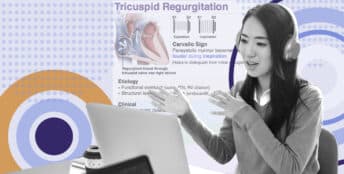That and Which: Which Should I Use?

Ever since I started working as a copy editor, I’ve come across certain issues more often than others. One of the more common ones is swapping “that” and “which.” What makes this fun (depending on your definition) is that the rules are different between American and British English. Here, I’m focusing on American English.
To keep it simple, use “that” for information necessary to the sentence, and use “which” for information that can be removed. Notice that changing the term in the following sentence actually alters the meaning:
The company’s office that has two lunch rooms is located in Cincinnati.
This indicates that the company has multiple offices, but the one with two lunch rooms is in Cincinnati.
The company’s office, which has two lunch rooms, is located in Cincinnati.
This indicates that the company’s sole office is in Cincinnati, and super cool fact, it has two lunch rooms (jealous?)
“Which has two lunch rooms” can be removed from the second sentence and the overall statement will still be true: the office is located in Cincinnati. If we removed “that has two lunch rooms” from the first sentence, we wouldn’t know that this company actually has multiple offices, one of which happens to be in Cincinnati. Confused yet?
Here’s an example that’s more relatable to the medical field. Which term should we use?
Eosinophilic esophagitis is a noninfectious, allergic inflammation of the esophagus resulting in symptoms of esophageal dysfunction such as dysphagia, food impaction, and epigastric or chest pain [which/that] does not respond to proton pump inhibitors.
Here, leaving “which” indicates that the information that follows can be removed from the sentence without changing its meaning, but is this true?
…resulting in symptoms of esophageal dysfunction such as dysphagia, food impaction, and epigastric or chest pain.
…resulting in symptoms of esophageal dysfunction such as dysphagia, food impaction, and epigastric or chest pain that does not respond to proton pump inhibitors.
or
Using “that” specifies exactly what type of epigastric or chest pain we’re talking about: the kind that doesn’t respond to proton pump inhibitors.
Sometimes, we can use either “that” or “which” and still get our point across.
Let me tell you about my favorite Qbank that helped me study for my internal medicine shelf exam.
Let me tell you about my favorite Qbank, which helped me study for my internal medicine shelf exam.
There’s a subtle difference in meaning between these two sentences. In the first one, this favorite Qbank helped the writer study specifically for the internal medicine shelf exam. In the second example, we can remove everything attached to “which.” The writer has a favorite Qbank. As a side note, it helped them study for their internal medicine shelf exam. Maybe it helped them study for multiple exams! Both examples make sense and more or less mean the same thing: this Qbank is great.
As an extra tip, the removable parts of a sentence beginning with “which” are typically set off with commas. Notice the commas in the example that includes “which has two lunch rooms“—they help indicate that this information does not affect the sentence’s meaning. Patricia T. O’Conner includes a useful memory aid in her grammar book Woe Is I:
Commas, which cut out the fat, go with which, never with that.
Need more grammar tips in your life? Catch up on all of Laura’s Lessons.





Comments (0)